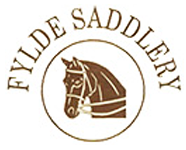Horse Rein Guide
There are so many options available to riders in a choice of equestrian disciplines when it comes to equipment. Whether choosing a saddle or bit, or anything else, a lot depends upon three factors. 1) the comfort and preference of both the animal and the rider, 2) the effectiveness or functionality of the equipment, and 3) safety. The same principles apply when you are considering the great choices of quality reins for you and your horse.
Here, we will provide you with a horse rein guide to help you choose the right ones for you. Firstly however, we will discuss what they are for. Horse reins help you to communicate with your animal. Although this is an important part of the commands and directions you wish to transmit, it is not the only way to communicate. Body positioning, including your legs and torso are also part of the way you connect with your horse as you ride. Your horse should respond to even the slightest ques you provide by means of these different ways to talk. However, if you choose the wrong kind of reins, this can affect your positioning. You need to be able to maintain balance while in the saddle, so that you do not lose this method of contact and connection. Therefore, the grip, length and strength you choose matters, and should be thought out by each rider, for each horse.
Quality Reins
Of equal importance is what kind of reins you feel most comfortable holding. The harder it is to stay in the saddle, the shorter your rides will have to be. This is not good for the horse in terms of developing skill and a relationship with you, and it is not good for you as a rider. Your reins should be long enough so that when you are traveling in a walk or trot, the horse has the movement he needs. He should also be able to reach down for a drink, without you losing your hold.
The type of reins you choose for your horse can depend upon what you use them for. For Example, as mentioned above, they are trained to be attuned to how you hold and cue with them. Having leather plaited, laced or plain reins will mean that they are heavier, which will help you in your efforts to communicate. Rubber reins can also help as, depending on the style and cut they can also provide the weight you need. Whichever you choose out of these can depend on what feels best in your hand and your personal preference of different materials. You can also purchase heavy marine-type rope reins that are also good for providing the needed cues, including when you are ground tying.
Shoe lace reins are a good choice if you are following a trail that the horse knows well and he/she does not need to follow your cues for every step of the journey. They allow you to still have contact with your horse if you need, but can be lighter.
Notched reins are a good choice when you have an inexperienced rider, or a child, by providing evenly spaced markers to help the rider know how to hold on to the reins.
Braided on laced reins also have a high-quality look, and can be a matter of preference. For example, for show horses, you might like your companion to look his/her best, in the most beautifully crafted equestrian gear around. Once again it also depends upon the feel of the reins in your hand, and the sizes available.
For more information on the kinds of horse reins you can purchase, you can contact Fylde Saddlery today.

